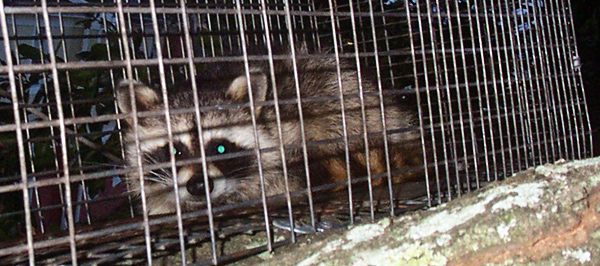- info@wildlifeanimalcontrol.com
Call us for help in your town
Wildlife Control Education
Do raccoons live or sleep in trees?
Raccoons can create dens virtually anywhere they
can, even female raccoons within a group can
share dens; however, only male raccoons have
been spotted to stay temporarily on trees.
Raccoons generally can live in hollowed with
some rotten logs, however, they cannot stay or
sleep in trees with no space for burrowing and
creating hollows. Raccoons can adapt quickly to
urban lives, where there are quite a number of
huge trees where they can create temporary
nests. Raccoons cannot sleep on the top of
trees, they can only sleep and live in hollow
nests created at the base or trunk of such
trees.

The ideal regions where raccoons can create
nests are regions with small stands of Timber
trees, especially those close to vegetation of
corns and vegetables. Raccoons are omnivorous in
nature, thus they can eat virtually anything,
including fish, frogs, and sometimes they can
get stuck by the side of the road when feasting
on dead animals such as snakes. Raccoons often
use their position from tree tops to watch their
prey and pounce on them when no one is watching.
In regions where raccoons don’t find water
easily, they tend to hide under large trees to
cool off after roaming about for several hours.
Raccoons do not hibernate but they can hide
under trees during extreme weather conditions
such as winter. While hiding under trees or in
their dens, they use the fat stored up to
provide extra insulation for their bodies and
the bodies of their young ones being raised.
When it comes to living on trees, Raccoons often
prefer trees with large and long branches where
they can easily jump unto. Raccoons have been
spotted on trees as high as 20 feet or more ,
but their abilities to survive on such heights
will depend on the number of branches available
for them to climb and how well they can use
their claws to have a solid grip on the trunk of
the trees.
Though raccoons are normally solitary in nature,
but they quickly build a family by creating
crawling spaces round trees, thus they can share
their dens. Many lost raccoons can quickly
re-establish connections with other raccoons by
locating crawl spaces around trees- these are
spaces that have been created by other raccoons.
When you have large trees with outgrown branches
around your property, it is ideal to cut down
such branches to dissuade raccoons from using
them to climb to the top of such trees and into
your property.
Go back to the How
to get rid of raccoons home page.
Need raccoon removal in your hometown? We service over 500 USA locations! Click here to hire us in your town and check prices - updated for year 2020.

















